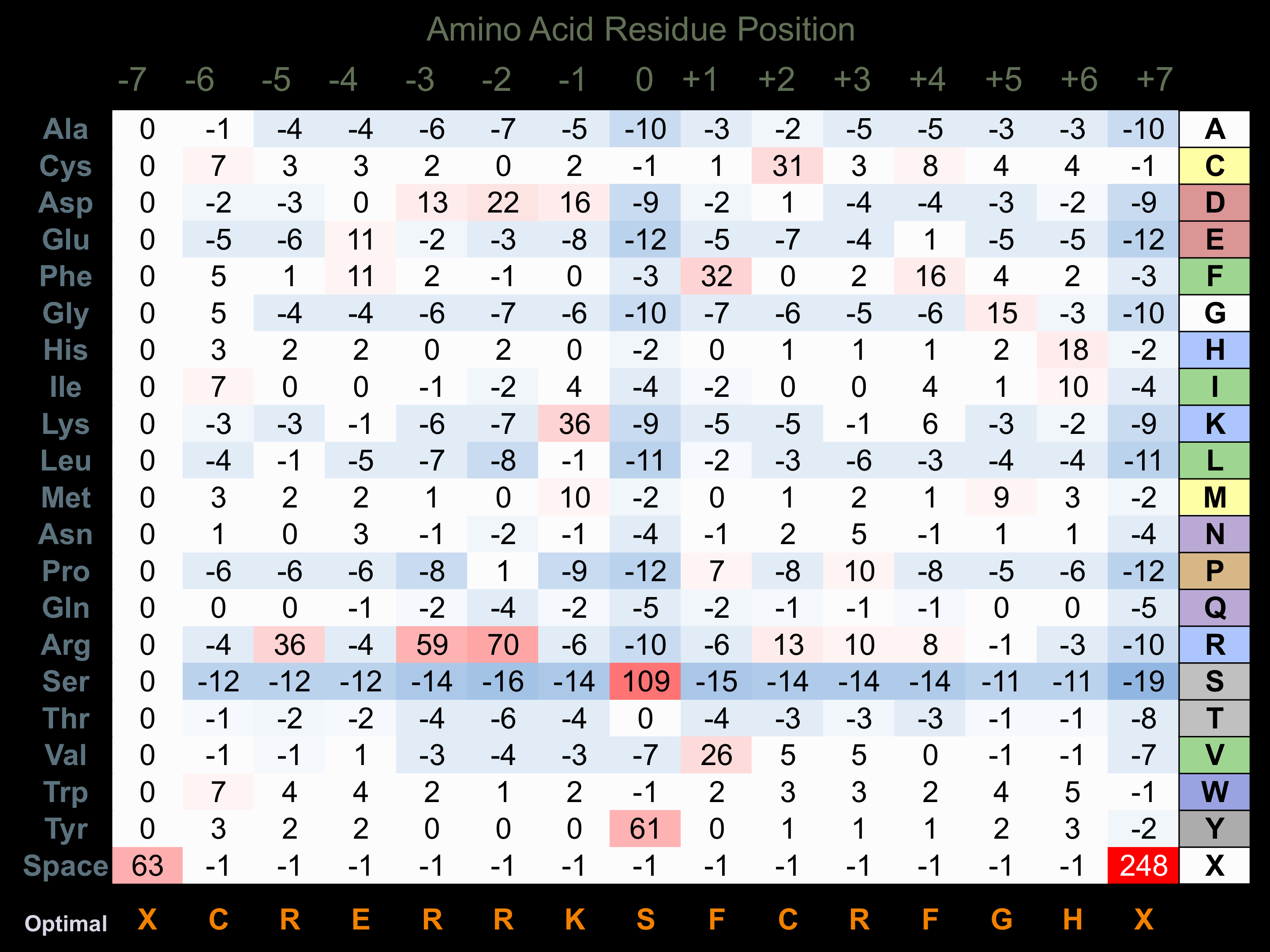Nomenclature
Short Name:
ULK4
Full Name:
Serine-threonine-protein kinase ULK4
Alias:
- EC 2.7.11.1
Classification
Type:
Protein-serine/threonine kinase
Group:
Other
Family:
ULK
SubFamily:
NA
Structure
Mol. Mass (Da):
142442
# Amino Acids:
1275
# mRNA Isoforms:
1
mRNA Isoforms:
142,442 Da (1275 AA; Q96C45)
4D Structure:
NA
1D Structure:
Subfamily Alignment

Domain Distribution:
| Start | End | Domain |
|---|---|---|
| 4 | 280 | Pkinase |
Kinexus Products
Click on entries below for direct links to relevant products from Kinexus for this protein kinase.
hiddentext
Post-translation Modifications
For detailed information on phosphorylation of this kinase go to PhosphoNET
Serine phosphorylated:
S177, S385, S390, .
Threonine phosphorylated:
T382, T389, T393, T577, T587, T645, T1228.
Tyrosine phosphorylated:
Y448, Y583+.
Distribution
Based on gene microarray analysis from the NCBI
Human Tissue Distribution
% Max Expression:
Mean Expression:
Number of Samples:
Standard Deviation:
% Max Expression:
Mean Expression:
Number of Samples:
Standard Deviation:
 100
100
1176
37
1174
 2
2
27
14
29
 3
3
32
20
24
 8
8
95
142
349
 35
35
414
43
337
 1.4
1.4
16
64
17
 0.9
0.9
10
48
7
 20
20
234
47
483
 13
13
148
13
177
 4
4
46
133
40
 3
3
30
40
31
 40
40
466
131
498
 3
3
38
31
26
 2
2
27
9
20
 2
2
27
37
32
 1.2
1.2
14
22
12
 3
3
35
322
31
 2
2
29
28
24
 3
3
31
113
25
 34
34
396
143
324
 2
2
28
36
27
 2
2
29
38
21
 2
2
25
21
20
 11
11
133
28
94
 3
3
36
36
26
 45
45
526
98
878
 2
2
26
37
20
 4
4
47
28
34
 2
2
25
28
18
 9
9
100
56
99
 0.9
0.9
11
6
11
 66
66
781
36
1758
 9
9
111
108
319
 55
55
646
104
556
 31
31
364
61
451
Evolution
Species Conservation
PhosphoNET % Identity:
PhosphoNET % Similarity:
Homologene %
Identity:
PhosphoNET % Identity:
PhosphoNET % Similarity:
Homologene %
Identity:
 100
100
100
100 97.3
97.3
98
99 -
-
-
94 -
-
-
88 -
-
-
- 47.1
47.1
49.6
89 -
-
-
- 81.2
81.2
89
83 81.3
81.3
90.2
81 -
-
-
- -
-
-
- 69
69
82.9
71 -
-
-
63 25.4
25.4
34.7
61 -
-
-
- -
-
-
- -
-
-
- -
-
-
- 42
42
62.5
- -
-
-
- -
-
-
- -
-
-
31 23.5
23.5
45
31 -
-
-
- -
-
-
-
For a wider analysis go to PhosphoNET Evolution in PhosphoNET
Regulation
Activation:
NA
Inhibition:
NA
Synthesis:
NA
Degradation:
NA
Protein Kinase Specificity
Matrix of observed frequency (%) of amino acids in aligned protein substrate phosphosites

Matrix Type:
Derived from alignment of 51 peptides phosphorylated by recombinant ULK4 in vitro tested in-house by Kinexus.
Domain #:
1
Disease Linkage
General Disease Association:
Neurological disorder
Specific Diseases (Non-cancerous):
Schizophrenia
Comments:
Schizophrenia is a neurological disease characterized by abnormal social interactions and behaviours. Symptoms of this disease include false beliefs, confusion, auditory hallucinations, reduced social expression, and inactivity. Knockdown of ULK4 expression results in the loss of microtubule integrity leading to compromised neuritogenesis and cell motility. In addition, mice lacking ULK4 expression display corpus callosum agenesis. Abnormalities in ULK4 expression have been linked to an increased risk for schizophrenia. For example, deletion mutations encompassing exons 21-34 of the ULK4 gene were observed in patients with schizophrenia, but were absence from control patients. In addition, smaller deletions that removed exons 33 and 34 of the ULK4 gene were observed in a different cohort of schizophrenia and bipolar patients. Therefore, ULK4 is suggested to be a suceptibility gene for schizophrenia and abnormal function of the ULK4 protein may have a role in the pathogenesis of the disease.
Gene Expression in Cancers:
TranscriptoNET (www.transcriptonet.ca) analysis with mRNA expression data retrieved from the National Center for Biotechnology Information's Gene Expression Omnibus (GEO) database, which was normalized against 60 abundantly and commonly found proteins, indicated altered expression for this protein kinase as shown here as the percent change from normal tissue controls (%CFC) as supported with the Student T-test in human Bladder carcinomas (%CFC= -51, p<0.002).
Mutagenesis Experiments:
Insertional mutagenesis studies in mice have not yet revealed a role for this protein kinase in mouse cancer oncogenesis.
Mutation Rate in All Cancers:
Percent mutation rates per 100 amino acids length in human cancers: 0.06 % in 24449 diverse cancer specimens. This rate is only -16 % lower than the average rate of 0.075 % calculated for human protein kinases in general.
Mutation Rate in Specific Cancers:
Highest percent mutation rates per 100 amino acids length in human cancers: 0.29 % in 1229 large intestine cancers tested; 0.18 % in 603 endometrium cancers tested; 0.13 % in 1608 lung cancers tested; 0.11 % in 710 oesophagus cancers tested; 0.11 % in 273 cervix cancers tested; 0.08 % in 1289 breast cancers tested; 0.06 % in 125 biliary tract cancers tested; 0.05 % in 807 ovary cancers tested.
Frequency of Mutated Sites:
Most frequent mutations with the number of reports indicated in brackets: A287E (4); S417P (4); E100* (3); F714C (3); V856I (3); R862Q (3).
Comments:
Fourteen deletions (all at K593fs*17), 1 insertion, and 2 complex mutations are noted on the COSMIC website.

